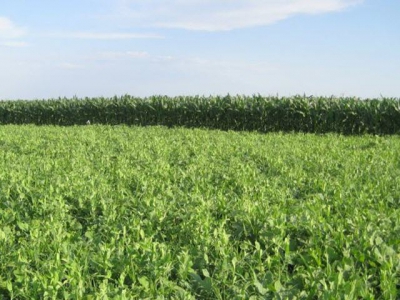Soil health importance highlighted in House hearing
Collaboration and continued research vital to helping educate on importance of preserving soils.
 Advances in ruminant environmental impact reductions
Advances in ruminant environmental impact reductions Examining recent developments in the study of rumen microbial ecosystem, genetic selection
 Making the most of calcium as a soil and plant nutrient
Making the most of calcium as a soil and plant nutrient Despite being a vitally important element for optimal crop production, calcium is often largely undervalued by farmers and agronomists.
 Stocking rate effects on growing juvenile sunshine bass
Stocking rate effects on growing juvenile sunshine bass Biofloc technology (BFT) production systems are widely used in the culture of shrimp, tilapia and other aquatic species.
 Energy efficiency in pumping systems on aquaculture farms
Energy efficiency in pumping systems on aquaculture farms Ecuador’s sustainable strategies for improved competitiveness, production costs and maximum operational efficiency
 Model tilapia venture shows mettle in Mozambique
Model tilapia venture shows mettle in Mozambique Chicoa is farming Oreochromis niloticus, more commonly known as Nile tilapia. These shoaling fish are social and territorial, and although omnivorous
 Advances in super-intensive, zero-exchange shrimp raceways
Advances in super-intensive, zero-exchange shrimp raceways Recent advances in super-intensive, limited-discharge, biofloc-dominated systems for raising Litopenaeus vannamei suggest that these systems can be profitable
 Recovering nutrients from seafood processing water
Recovering nutrients from seafood processing water Processing waters from the seafood industry contain valuable nutrients that could be used in food or aquaculture feed.
 Production of Pacific white shrimp in sandy soils in Indonesia
Production of Pacific white shrimp in sandy soils in Indonesia Culture of Pacific white shrimp (Litopenaeus vannamei) in ponds with plastic liners began in 2013 in the Special Region of Yogyakarta
 Nitrogen, phosphorus, eutrophication and effluent standards for aquaculture certification
Nitrogen, phosphorus, eutrophication and effluent standards for aquaculture certification Aquaculture certification standards intend to avoid or at least minimize negative environmental impacts of aquaculture production.
 Report calls for changes to Scottish salmon sector
Report calls for changes to Scottish salmon sector The “light touch regulation and enforcement” in place in Scotland, the report acknowledged, has not kept up with the industry’s rapid growth, necessitating
 Water temperature in aquaculture
Water temperature in aquaculture The temperature of water is an important variable in aquaculture, but in most types of aquaculture it cannot be controlled and depends upon the amount of solar
 Ammonia nitrogen dynamics in aquaculture
Ammonia nitrogen dynamics in aquaculture Ammonia nitrogen consists of ammonia (NH3) and ammonium (NH4+), but methods of measuring ammonia nitrogen concentration do not distinguish between the two forms
 In South Africa, abalone farming goes for gold
In South Africa, abalone farming goes for gold Stories about abalone in South Africa frequently make the press, but it is not usually good news when it does.
 Global shrimp production review and forecast: Steady growth ahead
Global shrimp production review and forecast: Steady growth ahead Globally, production of farmed shrimp is expected to increase at a 5.7 percent compound annual growth rate (CAGR) from 2017 to 2020.
 Shrimp farming in Guatemala has gone intensive
Shrimp farming in Guatemala has gone intensive The shrimp farming industry in Guatemala has embraced an intensive production model similar to the one developed in several Asian countries, with smaller
 Treatment of shrimp hatchery effluents
Treatment of shrimp hatchery effluents Sedimentation and biofiltration simple but effective technologies that should be widely adopted by industry
 New tech trialled for water quality monitoring
New tech trialled for water quality monitoring A project to test cutting-edge techniques that could help to protect the aquaculture industry from the impact of harmful algal blooms (HABs) and water quality
 Constantly changing pH unavoidable, completely normal
Constantly changing pH unavoidable, completely normal Aquaculture ponds should have waters with pH above 6.5 and sufficient alkalinity either naturally or because of liming.
 Effects of mechanical aeration on evaporation rate, water temperature
Effects of mechanical aeration on evaporation rate, water temperature Restricting use to periods when oxygen supplementation is needed can conserve water, lessen energy use. Effects of mechanical aeration on evaporation rate
